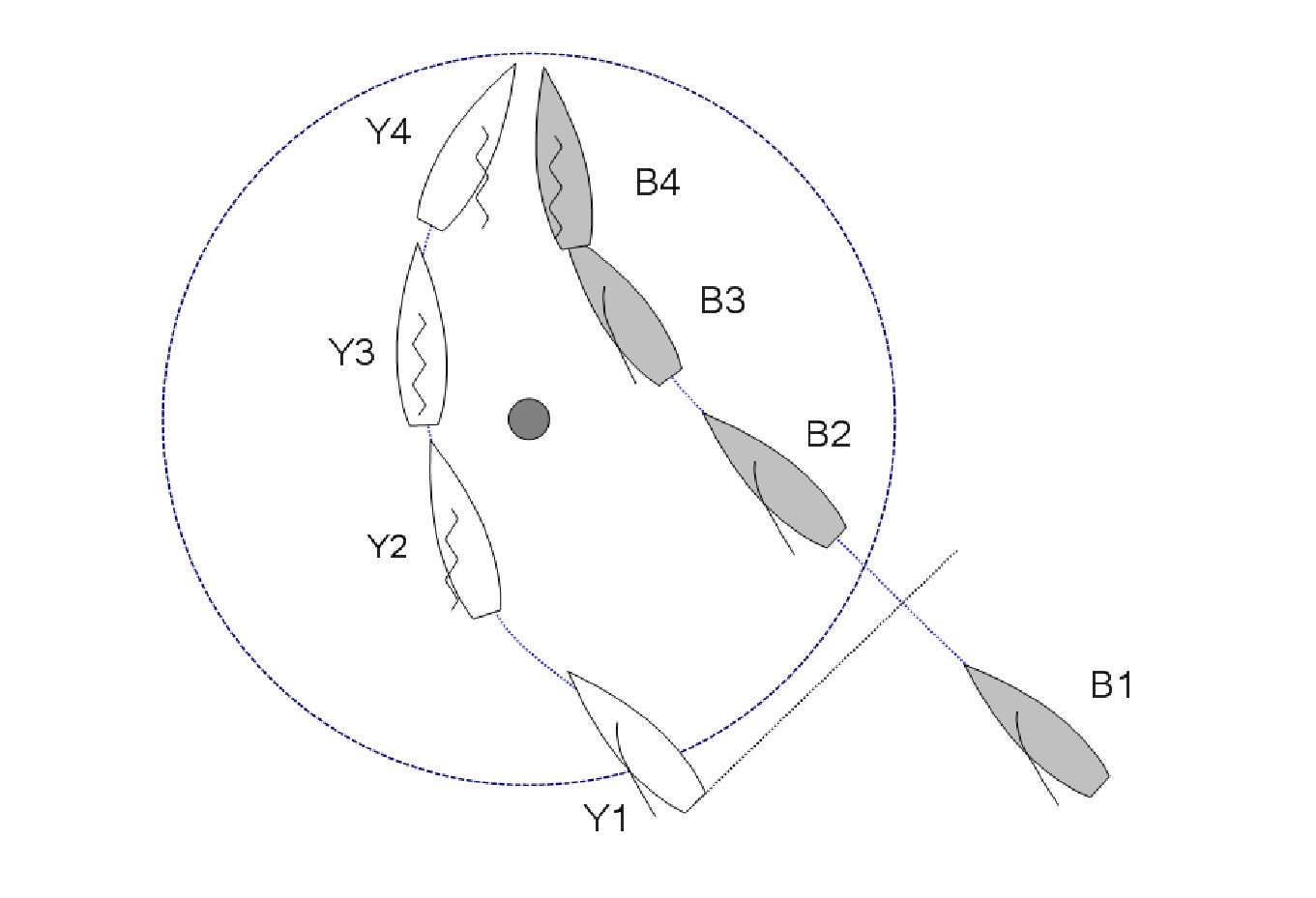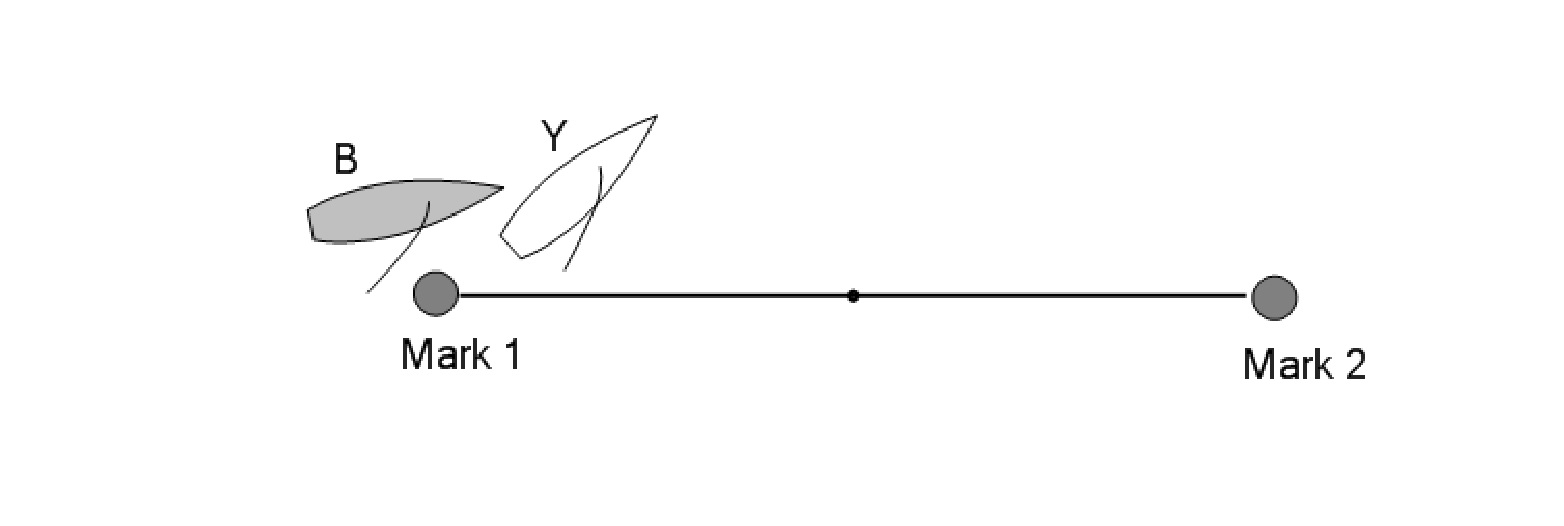


Section E - The Windward Mark
TR CALL E13
Rule 13, While Tacking
Rule 23.2, Interfering with Another Boat
Question 1
Y and B are approaching a windward mark to be left to starboard. Y is clear ahead
when she enters the zone. B leaves the mark to port, then luffs but does not pass head
to wind. Y passes head to wind, but cannot bear away to a close-hauled course because
of the presence of B. Y protests. What should the call be?

Answer 1
Penalize both.
After position 3, Y has already passed the mark and is on the leg to the next mark. B
still needs to sail to the required side of this mark to continue to sail the course and is
on another leg from Y.
When B interferes with Y she is not sailing her proper course and she is on another leg
of the course from Y. Therefore B breaks rule 23.2.
When rule 23 applies, the rules of Part 2 Section A continue to apply and Y breaks rule
13.
Question 2
Y has rounded the mark and is on the next leg. B is rounding the mark. Rule 17 does
not apply to Y. Y luffs above her proper course to slow B. B protests. What should the
call be?

Answer 2
No penalty.
As both boats are sailing toward the next mark Y is not on another leg of the course
from B. Therefore, Y does not break rule 23.2.
When boats are rounding a mark on the same required side, even when one or both of
them may be making a very wide rounding, neither is sailing on another leg from the
other boat.
After the starting signal, a boat that is passing the wrong side of a mark is on another
leg of the course from a boat that is passing the mark on the required side.
[There







